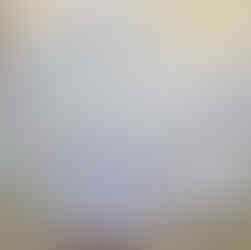Quilted and Bound - and Labeled?
- juliamcleod7
- Apr 10, 2022
- 3 min read

As quilt-makers we very often think of a project as ‘done’ when the piecing is complete. The color and design choices have been made, we’ve cut up our fabrics, sewn the pieces back together and the finished quilt top - hopefully - is a success.
Many quilting friends of mine have stacks of finished quilt tops, all waiting for those final steps of basting, quilting and binding to take place.
Those same friends also tell stories of stitching on the binding at the last minute, just in time for the quilt to be gifted or entered in a show.
But there’s one final, final step that is too often overlooked - the label!
(Here I should admit that this blogpost should be filed under the ‘Do as I say, not as I do’ category because although I fully believe everything I’m about to recommend, I too often neglect to attach labels to my own quilts).

At a recent quilt show I went looking for labels. With the help of the white-gloved docents I found some wonderful examples of ways to label a quilt. I also found many quilts had no label at all - just the temporary paper label required by the exhibit organizer. A further hunt around Instagram brought me a good dozen ideas of what information to include, and different techniques to use in making labels.
So what should we include on our labels? Future quilt historians will be grateful to see your name, the year the quilt was made, and maybe also where in the world you made the quilt.
As part of your creative process, you may have named the quilt or made it for a specific person on a particular occasion. Some makers include details of a graduation, wedding, illness or other milestone that prompted the making of the quilt.
Crediting the person who did the quilting, if it’s not you, is good etiquette. I’ve also seen credit given to pattern designers. Some makers even state the name of the fabric range they used in the quilt.

Even nuts and bolts of the dimensions, fiber content and washing instructions could also be worth including.
Of course, if you include all the above suggestions, your label will read like a short essay. For some, that’s too much information.
I was struck by the labels I found that gave very little away, suggesting their makers had a very small ego, cared nothing for quilt historians of the future, and were happy to send their creations out into the universe in anonymity.
Once you’ve decided what information you want to impart, there are many methods available for labeling. The quickest is to simply write on the quilt back or label with a permanent marker.
Another option is to draft a label on your computer and print it using your home printer onto purchased printable fabric sheets. These, even after being detached from their backing, can be a little tough to hand sew through. I’ve machine sewn fabric borders to this kind of label, giving me a softer edge to appliqué to the quilt back.
It’s possible to iron freezer paper onto plain cotton fabric cut an 8”x11.5” sheet and feed it through the printer (most of the time it works, occasionally it can get tangled in the printer). The nice thing about this method is that you can even include a photo in your printed label.
If you have any left over blocks from your quilt top, one could be made into a sweet label.
Vintage linen cocktail napkins and coasters also make beautiful labels, with their edges already embroidered.
Speaking of embroidery, stitching your details into a quilt back is also an option if you don’t like the look of ink.
Lastly, for the prolific quilter, commercially printed or woven labels can be ordered.
Whichever route you take to create labels for your quilts, I encourage you to take the time to do it. When our quilts outlive us, those labels will serve to bear witness to who we were, who we loved, and what we made.
Thank you to all the quilters who allowed me to use images of their work:
@knitwitz, Charlotte gurwell @charlotte_jeffcitymaker, Fion Forsyth @bendigolioness, Angie Anderson @sewingspace, Vanessa Vargas Wilson @craftygemini, Jo Avery @joaverystitch, Sarah Cooper @coopcrafts, Leeanne @quiltmekiwi, Donna Moore @donnaslavendernest, Jenn McMillan @sewfinethreadgloss, Alane Davis @alanedaviscreates, Kristina Brinkerhoff @centerstreetquilts, Giny Dixon,



































Comments